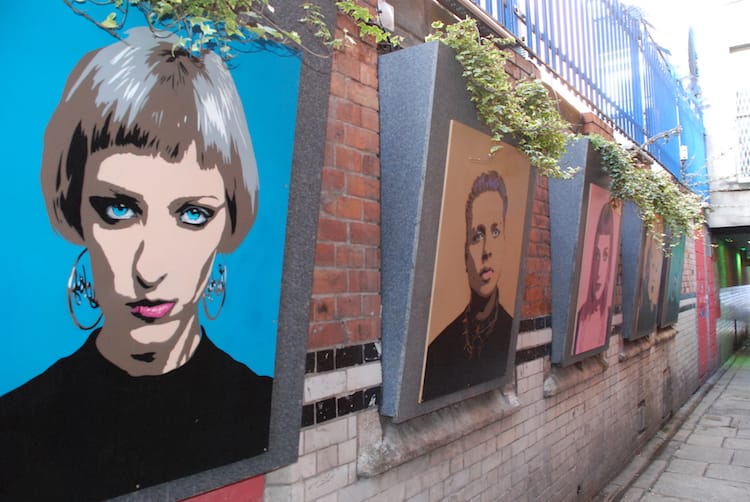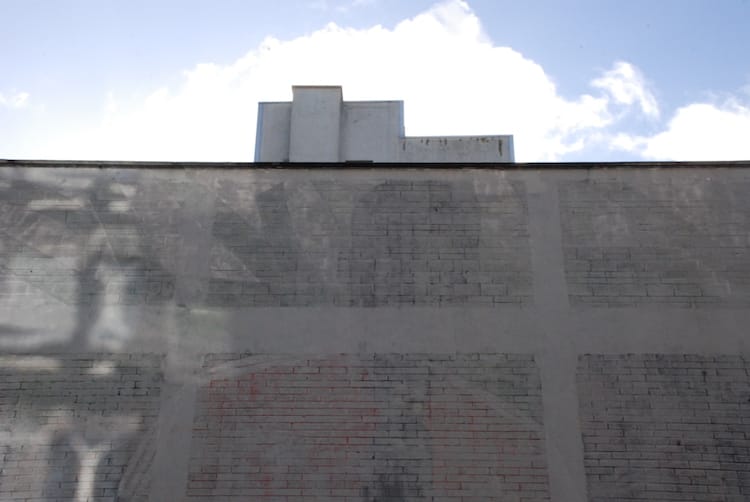What’s the best way to tell area residents about plans for a new asylum shelter nearby?
The government should tell communities directly about plans for new asylum shelters, some activists and politicians say.
There is a case for the City Art’s Office to take a lead role in the debate, says Labour Councillor Rebecca Moynihan.

Dublin City Council needs a clear policy for street art and murals, says Labour Councillor Rebecca Moynihan.
At the moment, it’s unclear for many artists working in Dublin just what the rules are, what defines street art, what is allowed and what is not, she says. “There is no full plan and consistency.”
At last week’s meeting of the council’s arts committee, members agreed to pursue that line of thinking, and push for definitions.
Street art in Dublin has evolved, says Labour’s Moynihan. There are the street artists who work on commercial murals, and those more focused on community-based art.
“We now need to look at what the current legislation is and what definitions we will adopt,” says Moynihan.
Right now, street art and murals fall under the Planning and Development Acts, 2001-2015.
It’s up to the council’s planning department to enforce the rules for artworks that don’t have planning permission, much like with illegal advertisements.
Past murals have fallen foul of these rules. Joe Caslin’s “Claddagh Embrace” on George’s Street in 2015 and Maser’s “Repeal the 8th” work on the Project Arts Centre in Temple Bar in 2016 were both removed because they violated planning laws.

But there is a case for the City Arts Office to take a lead role in the debate, says Moynihan. The arts office doesn’t have a policy towards street art and murals, which leaves the art form at the mercy of planning regulations and enforcement on a case-by-case basis.
A clear policy would bring greater consistency, she says.
That would means, she proposes, the council’s arts office drawing up definitions for what is considered commercial street art, what is considered political street art, where each is allowed, and why.
Because responsibility for street art straddles different departments – the council arts office and the planning department – more joined-up thinking could help, said Assistant Chief Executive Declan Wallace at last week’s meeting. But it won’t be easy, he cautioned.
“I’d say it’ll be a big challenge to come up with something that reaches a definitive policy,” he said.
There’s been a “low-hanging fruit” approach in the past towards the city’s street art and murals, says Green Party Councillor Claire Byrne.
It’s simpler for the council’s planning department to enforce legislation than enact policy. “And I think that’s why we need clarity,” says Byrne. “It isn’t clear at the moment.”

Public-art applications pass through the council’s public-arts subcommittee. So maybe proposals from street artists and muralists should too, she said.
“I would argue that if we have a clear policy in place then it frees up our planning department,” she says. “We don’t want to see a situation where we’ve no public art.”
There is a lack of clarity and definition at present, says street artist Will St Leger. And, he says, there’s a lack of engagement by all sides.
However, while clarity is needed on the art form, there is a risk of being overly prescriptive. “Street art is by its very nature quite feral,” St Leger says. “Defining street art is difficult, but I’m glad someone’s taking the initiative to think about it.”
Muralist Joe Caslin says many major European cities have clear policies, definitions and rules regarding street art and murals. Dublin does not, but it would be good if it did, he says.
“When I put up the Yes Equality mural, there were seven complaints, but 84,000 people who signed a petition to keep it,” says Caslin. “So planning implementation is set for those who are in disagreement with the work.”

It’s about time that Dublin caught up, he says. “I’ve worked with 19 councils throughout Ireland and Dublin City Council is the only that has refused me,” says Caslin.
Labour’s Moynihan says it’s time the council involved the street-art community more when making decisions. A clear policy could help with that.
But there’ll be plenty to tease out over the coming months where future policy is concerned, she says. The next step is for the council’s arts office to draw up a policy report, which is due in March.
Get our latest headlines in one of them, and recommendations for things to do in Dublin in the other.